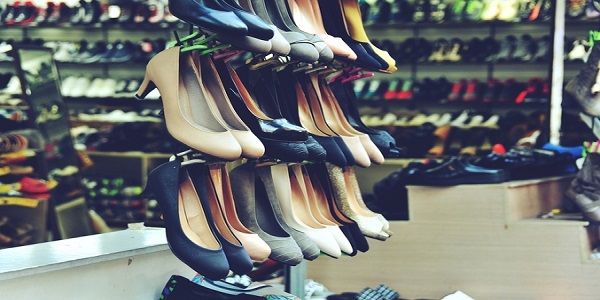How To Scale A Shoe Selling Business – Shoes are practical and elegant products. Starting a shoe business offers the opportunity to earn a steady income while selling the fashion products that people love and use every day. If you have a passion for shoes and entrepreneurship, deciding how to start a shoe company could be your next adventure. Let’s explore the details of scaling a shoe brand.
How To Scale A Shoe Selling Business
1. Update shoe size
Shoe sizes are a ripe area for retailers. Over the last decade, clothing retailers have been trying to improve the fit of clothing, from expanding their size range to offering size customization. However, shoe sizes remain pretty much the same in the shoe industry in general.
Expand your size range. Average women’s feet have increased by shoe size since the 1970s. But women with large feet have a hard time finding shoes at their favorite stores since most retailers don’t carry sizes larger than 11. You can dominate market share by offering a wider range of sizes (up to 15 for women) which is very insufficient.
2. Use mobile POS
It is more common for shoe salespeople to work one-on-one with seated customers than in any other type of retail. The nature of trying on shoes alone provides a highly personalized approach to the customer.
Using a mobile POS is an intuitive extension of this intimate process. With a mobile point of sale, employees can interact with customers right where the shoes are being tried on, instead of the customer gathering everything and running to the table.
3. Make endless lanes
The retail world is now omnichannel. Customers can’t see the difference between a retailer’s physical and digital storefronts. Shoe retailers can leverage this insight to create endless aisles.
Endless aisles open up all of your inventory to customers, so if they like a particular shoe that you only sell online, they can buy it from you in-store.
4. Invest in sustainability
There are many opportunities for shoe retailers to invest in sustainability. Some are small and some require a lot of time and money, but whatever you decide on will not only increase customer loyalty but also help save our planet.
Use sustainable packaging. Shoes are usually wrapped in tissue paper and cardboard, so flipping recycled paper and cardboard shouldn’t be too difficult.
5. Build a community
Shoes, perhaps more than any other type of clothing, are highly specialized for certain activities. Suitable for running, rock climbing, cycling, office wear, weddings, leisure activities, etc. There are shoes for As a result, if you sell shoes, it’s easier to build a community than to sell any other type of clothing because shoes are very open to activities.
The ability to build a community around your brand isn’t limited to sneaker brands, either. Women’s shoe retailers that predominantly sell office shoes may choose to offer professional development seminars or networking events. These events help you get to know your customers, value them along with your products, and gain new customers.
What Will Motivate Customers To Patronize You?
1. User-friendly store
The Internet does not offer a second option. A well-designed and functional website is a huge credibility killer. Did you know that 88% of online users are less likely to return to a site after a bad experience?
The most important thing here is to help buyers get what they want without unnecessary confusion. This means that you need to focus on the user experience by providing shopping categories, filters, and options to compare products and prices.
2. Nice Videos & Photos
If you’re going to post an image and write a bulleted description, that’s not a good idea. Buyers want to see product images from different angles. Don’t let them magnify the image, but feel it. Your shoe store needs high-resolution photos and videos that don’t take too long to load.
3. Mobile-friendly Experience
79% of smartphone users have shopped online using their mobile devices in the last 6 months. To ensure a user-friendly experience, make sure your store is responsive and adapts to whatever device is accessed.
4. Return Policy
Make sure your shoe store has a clear return policy. This helps your customers build the confidence that your brand is there for them, just in case.
How To Start A Shoe Business
1. Identify the demographics of your market.
There are several options to choose from: women’s fashion, women’s sports, men’s fashion, men’s sports, children’s, seniors, or a combination of these. For example, if you want to wear women’s sports shoes, you can also consider men’s and children’s sports shoes. By doing this, you will exponentially increase your customer base.
2. Calculate your startup costs
These costs include, but are not limited to, rent, construction (if applicable), fixtures, equipment such as display racks and desks, security systems, point-of-sale systems, supplies including socks and shoelaces, and supplies and office team.
3. Find out if your state or municipality requires a business or retail license.
Contact your state’s corporate department or government department and ask if a shoe retailer needs a license. Do the same with your local government.
4. Find the right commercial space.
Your shoe store should be located in an area with easy access and high traffic. It is recommended to locate your store in a place with ample parking and close to clothing stores or boutiques. Create a list of potential properties and contact rental agents for information. Most commercial spaces are rented under “NNN” or “Triple Net” contracts, which means you pay per square foot plus a portion of property and maintenance taxes.
5. Register your company in the state
Go to the legal documentation site and create your master agreement. File your statutes in your state. You must also register a fictitious name or DBA for your shoe store with the state or county. When completing your articles of association, ask if the state has registered a business or county name.
Conclusion
Implement the steps discussed in this article and watch your business grow!!! Kindly check the recommendations below to read more content. Thank you!
Frequently Asked Question(s)
How do I write a business plan for selling shoes?
- Give a brief overview of the shoe store industry.
- Discuss the type of shoe store you are operating.
- Detail your direct competitors. Give an overview of your target customers.
- Provide a snapshot of your marketing strategy. Identify the key members of your team.
- Offer an overview of your financial plan.
How profitable is a shoe business?
Selling shoes online is profitable. In Q3 2022, the footwear market generated $381.90 billion in revenue. The market is projected to grow annually by 5.88% until 2027, with the percentage of online selling increasing annually.
How do I convince a customer to buy shoes?
- Be natural and do not use scripts.
- Ask about the clients’ well-being.
- Use names while talking with a client.
- Prove that your products are better than those offered by competitors.
- Keep initiating further conversation.
- Specify the positive characteristics of the customer.
- Act on emotions.
How much does a shoe owner make?
An average shoe store makes about $851,076 in sales, yielding a profit of about $127,363 for the owner.
Who owns No 1 shoes?
Ngahuia Group
Reference(s)
- vendhq.com – 5 Ways Shoe Retailers Can Step Up Their Game
- brushyourideas.com – How to Start an Online Shoe Store: A Complete Guide
- I3funding.com – How to Start a Shoe Company: A Step-By-Step Guide
- business.chron.com – How to Start a Small Shoe Business






